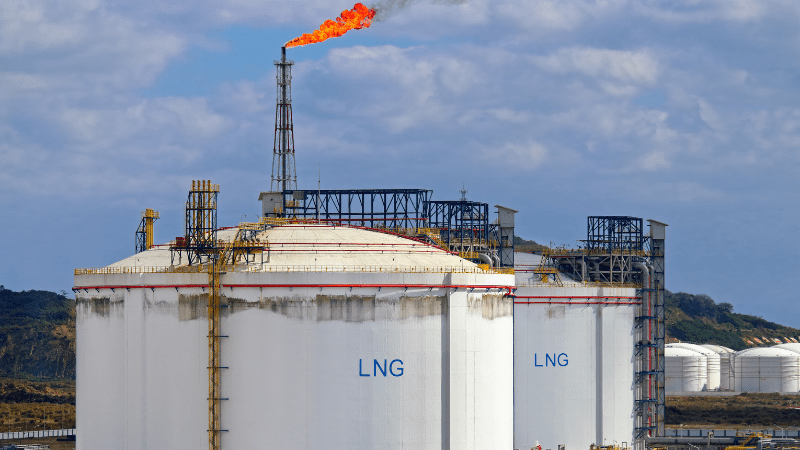Canada's GDP has dropped for two consecutive quarters this year, by 0.8% at an annual rate in the first quarter and by 0.5% in the second quarter. The GDP had been falling for first five months of the year and grew in June, by 0.5%. Is this the first sign of growth or just a “dead cat bounce” which will be followed by renewed decline? Apart from the oil and gas prices weakness, what are the fundamental reasons for the weakness of the Canadian economy? We addressed these questions to a Canadian economic and market expert Mark Lackey, who is the Senior Partner and President of Presmont Group, a Bay Street financial advisory and capital markets company.
NP: Are you expecting a recovery or continued recession?
ML: I think the numbers in the second half of the year will be somewhat better. My overall forecast for the year is a 1.2% GDP growth, I expect that the second and third quarters will be positive. For a number of reasons. First, it takes a while for the lower Canadian dollar effect to work. The exports grew in June and I think the growth will continue, in particular, of the exports into the US, because I do not expect the Canadian dollar to grow a lot. And I don't think the declines in capital expenditures, which the oil and gas sectors have taken, will be as bad going forward. I also expect some recovery in the price of oil, only back to the mid-50's ($50 per barrel – NP), but not at the current levels ($44 for WTI Crude Oil on Monday, September 7 – NP).
My number one province for growth this year is British Columbia as the forest product industry is looking better given the US housing market. Obviously, I have Alberta in the recession for the whole year, and Saskatchewan with little or no growth, negative growth in Newfoundland. I expect growth in Ontario by around 2% this year, but that means somewhat better growth later in the year. I expect the unemployment rate to go down from the current 7% to 6.9% at the end of the year.
So, things should get better from the present levels, but I am not expecting anything spectacular by any stretch of imagination. For the next year, I think Canada's GDP growth is sitting around 2%.
NP: The opinions differ on what share of the economy is in decline. Prime Minister Stephen Harper has said that 80% of the economy is growing but many critics are saying that the decline has affected a much bigger share of the economy. Is it an issue of the time period in question?
ML: There are indirect effects of the oil and gas sector decline. The perfect example is some of the manufacturing in Ontario and Quebec that makes oil and gas equipment. Another thing that has hurt us is the “Buy American” program in the US which kept out Canadian iron ore, steel and some of the manufacturing in the last few years. But we have a pretty good growth in technology, biotech and pharmaceuticals. These sectors do not represent big part of the economy or stock market, but they are growing and they are getting financed.
You are right, these statistics depend on the time period. If we look at June only, there is truth to what Prime Minister is saying that it was not as bad in terms of the wide-spread decline. For instance, the service sector does have significant exporting opportunities to the United States. I believe that the US economy will grow reasonable well in the near future, so, excluding the oil and gas sector, it's not as bad for the Canadian economy. The financial services sector is quite tied to the oil and gas, but I don't see any big pullback in bank growth and employment as some people suggest.
NP: Business investment seems to be among the key drags on the Canadian economy – it fell by 18% in the first quarter and by 12% in the second one. This decline is linked to the oil and gas sector. But why was investment weak even when oil prices were strong – a so-called “dead money” problem, that corporations have been sitting on piles of cash?
ML: Let's also not forget big capital expenditures cuts in mining: gold, copper, silver, across the board, maybe not so much in uranium. And of course, there are secondary effects in the steel and manufacturing sectors which produce for mining and oil and gas.
There are companies which are not related to these sectors and which are not investing enough though. Some of them are worried about the overall world growth. I think some of that is overplayed – China has slowed down but it's not crashing. World growth will not be as strong this year as we thought, but it won't be like in 2008-09, where there were negative numbers. It will probably be about 2.6%-2.7%. It's not great but not terrible either.
Some companies are sitting on their cash because they are looking for direction and changes. Like for example there are companies who are ready to invest in the Keystone pipeline. Some people in Canada are expecting that the new administration in the United States will be more favorable to this project and more friendly to Canada in general, that the “Buy American” program will disappear and that problems for our wood and agricultural products will disappear. Our heavy oil has not had quite the access to the US market either. And the heavy oil's price differential to WTI Crude Oil is making the problem worse. Part of this problem has been due to the lack of pipeline space. We are now reversing the pipeline from Western Canada, Line 9, and TransCanada is proposing the Energy East project. These projects could help raise business investment.
NP: What do you think about a recent article in the Economist that called Canada a new rustbelt. It said that “In the decade to 2012, some 20,000 factories shut down” in Canada.
ML: Right now, GM has said that the Oshawa plant is open till 2017 and then they will reevaluate. Some steel-related production is also OK for the next 2-3 years. But, over a longer term, there is truth to those concerns. One thing that's hurt the Ontario manufacturing is high cost of electricity, the highest in continental North America now, it has to be addressed at some point. I hope it will be addressed in the next year or two, instead of continuing to move up the rate. Electricity prices have to be lower for industrial users.
However, if we keep the Canadian dollar around 80 US cents or lower, the manufacturers are less likely to move (75 US cents as of September 7 – NP). There is a lot of competition for auto production out there – just look at the expansion in Mexico in the last five years.
NP: Are there any other cost-related problems in Canada that are hindering manufacturing? Maybe workforce-related costs?
ML: Canadian autoworkers are highly productive, our plants are highly productive. But there is no question that Ontario and Quebec autoworkers are pretty much the highest paid in the world. It's in line with places like Michigan, but a lot of autoproduction in the US has moved to Tennessee and Georgia where labor is cheaper. If you combine that with lower state taxes than our provincial taxes, and lower electricity prices, the only way to offset that is with weaker Canadian dollar, or with significant productivity growth by the Canadian workforce, or by substitution of the current workforce with new people who won't be paid as much.
NP: There is actually an economy-wide problem that productivity in Canada is stagnating.
ML: Yes, the growth rate of productivity is not as high as it used to be. Part of that is the function of the low business investment problem. If you stay with older plant and technology, you won't raise your productivity. We need to look at taxation and other issues to raise investment and productivity. There are some demographic issues as well: Canadian Chamber of Commerce believes part of the problem is that we don't match the right jobs with skilled people. Maybe some people, who are taking University courses, would be better off going to community colleges to learn skilled trades. In the end, if we don't have skilled workers, companies move.
Another problem is that the government has got bigger, it's twice as large today as a percentage of GDP than it was 50 years ago. And the government is not anywhere as productive as the private sector. But to scale back parts of the government is not a simple thing to do. The government is so big now, that it's almost too big to fail.
NP: Do you think that oligopolies in the Canadian financial and telecom sectors are hurting the economy?
ML: In the telecom sector, I don't know if the whole lot of other operators would come in. The oligopoly in that sector is not a big concern to me.
In banking, we have six big banks and don't have as much competition as in the US. On the other hand, our banking system works better during “black swan” events, like in 2008. Another positive is that, look at the credit unions, they have really grown. Meridian is growing, Ukrainian Credit Union is growing, you would know. That part of the financial market is changing.
However, in Canada, we do have higher growth in the small- and mid-size businesses that in the big business sector. And we need to figure out ways to get more capital in the hands of the smaller businesses. Many people have started businesses in Waterloo and Kitchener area and moved to Silicon Valley because it's easier to find venture capital in the US. We should keep at least some of these talented people in Canada. We need the regulators to help that, Ontario Securities Commission (OSC) and IIROC (The Investment Industry Regulatory Organization of Canada), to make it less restrictive to invest in small- and mid-size companies. Then, the Ontario government wants to bring a new payroll tax on a new pension. It's not a good idea – it will hurt small businesses the most, which are struggling to survive.
Share on Social Media



































